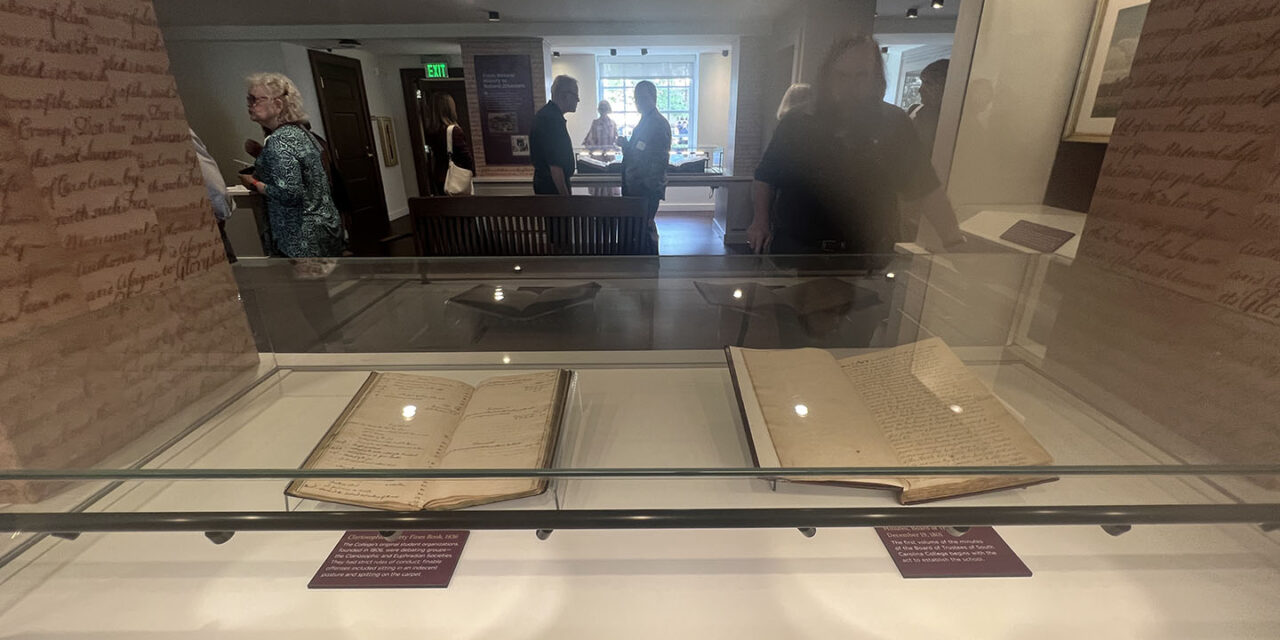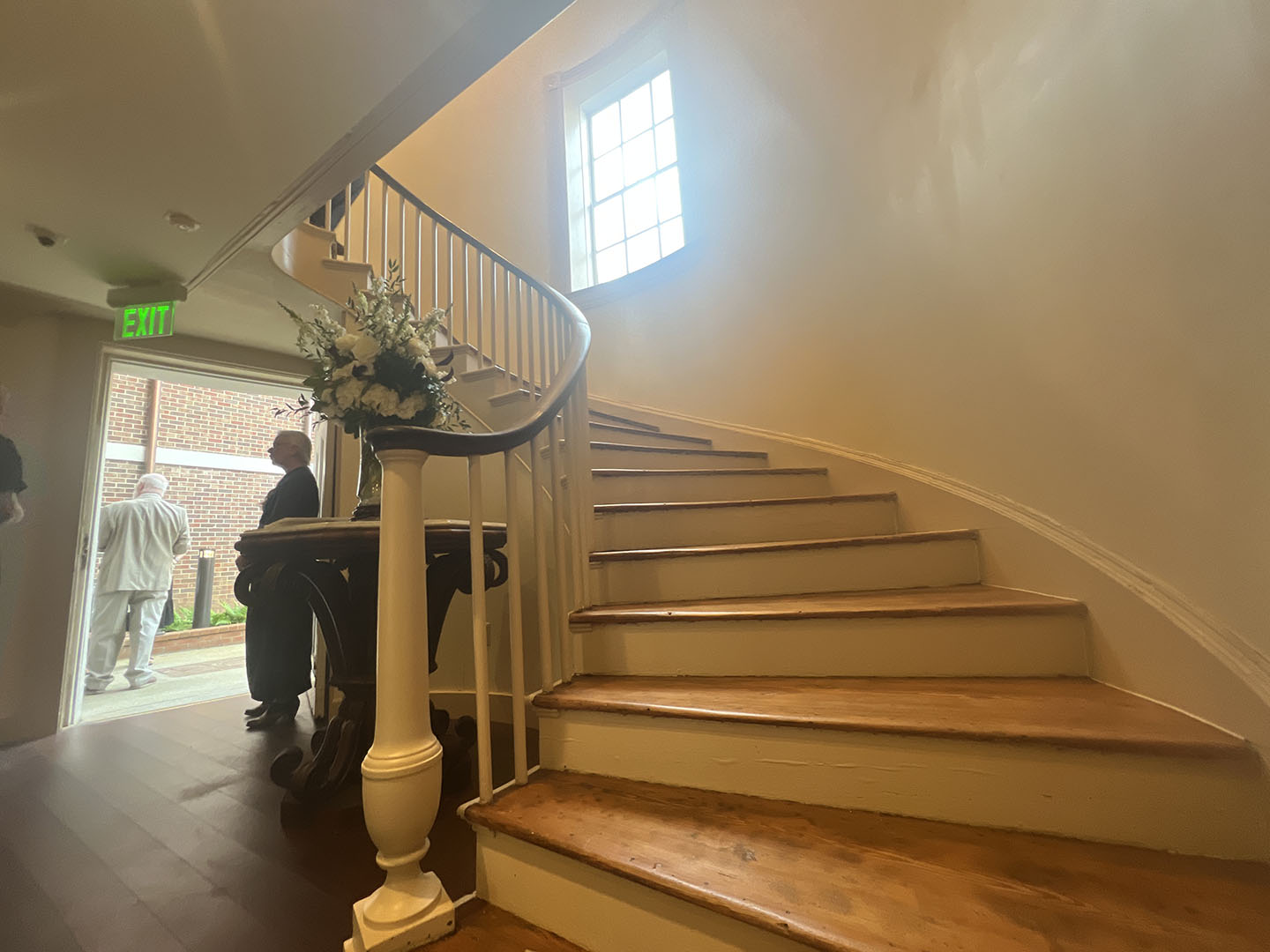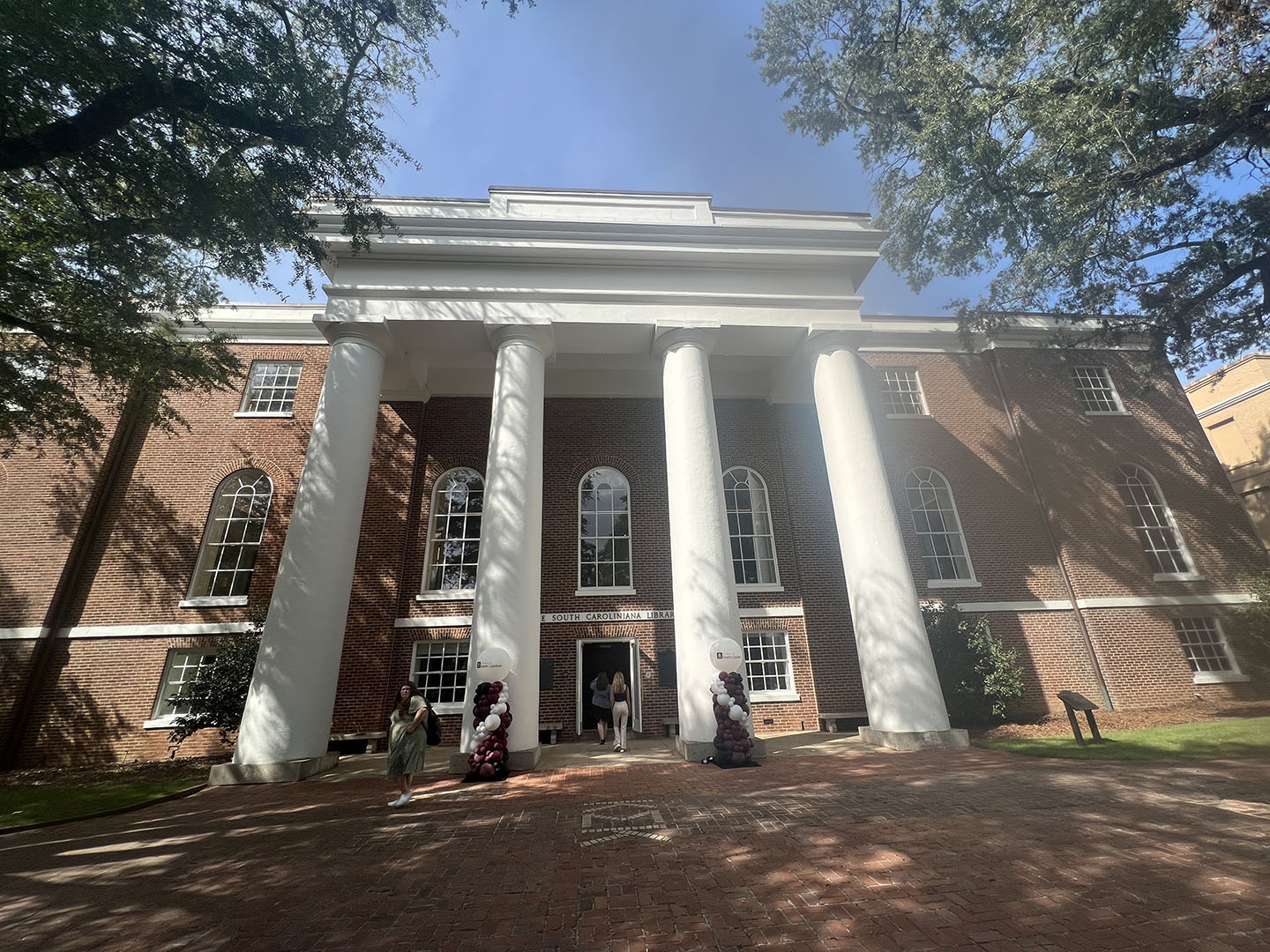A first-floor exhibit shows some school documents: a Clariosophic Society rules book from 1836 and the minutes of the Board of Trustees from Dec. 19, 1801. (Photos by Sophia Laico/Carolina News and Reporter)
The South Caroliniana Library’s historical charm now can be seen beginning with the building’s exterior, with its new, tall glass doors leading the way to the history inside.
Visitors to the newly renovated library can explore rotating historical exhibits as well as peruse original documents for research or study purposes.
The library on USC’s Horseshoe is the oldest freestanding collegiate library in the nation. Its documents hold the key to South Carolina’s history and the roadmap that lays out how the state came to be.
“In nearly every angle, every page of our nation’s history, there is tremendous primary source material at the Caroliniana,” said University of South Carolina Associate Professor Dr. Bobby J. Donaldson.
The more than $10 million renovations took about four years of construction work to finish, said David Banush, USC’s dean of libraries. The project was extended due to the COVID-19 pandemic, but the building reopened with fanfare Oct. 5.
The fire suppression and security systems needed urgent improvements for safety reasons, Banush said. Workers also improved the air conditioning, heat and lighting systems.
Modern improvements to the building erected in 1840 weren’t the only renovations made. The library removed the carpets, revealing the original floors that are as old as the building itself, Banush said.
The collections housed inside the building needed to be protected so future students will be able to use the materials, said Nathan Saunders, the library’s new director.
The library is home to more historical documents than any other archive in South Carolina, Banush said.
For South Carolinians, “this is their history,” he said.
Robert Mills, one of the leading architects in the country, designed the building, Donaldson said.
Mills also designed the Washington Monument, the early site plan for the city of Columbia and several other now-historic buildings in the state.
“The library itself is an extraordinary repository of artifacts, letters, newspapers, that documented the diverse history of South Carolina,” Donaldson said.
Caroliniana holds a great deal of history on the Civil War, consisting of reading material, letters from soldiers and photographs, Donaldson said. Information about the period of Reconstruction and both World War I and World War II also can be found.
The hope is that the library will be the place to study the hidden culture of South Carolina, Saunders said.
“This building being open is a symbol but also the tool to bring in more people to help them understand their past,” Saunders said.
Exhibits designed to display that history can be found throughout the library, Banush said. For example, there is a brick from a 1970s renovation that was found with a paw print engraved in it.
“Instead of housing books, there are books in the stacks in secure storage,” he said.
The library also has a room for teaching and lecture purposes, Banush said.
“Students in K-12 education would be able to work with historic documents from a young age and really appreciate the history and understand how the world that they live in got to be the way it was,” he said.
“We hope to be doing a number of events over the course of the next year to re-familiarize people with the building and with the wonderful stories and histories that are contained within it.”
An exhibit on manufacturing in South Carolina’s Upstate is located on the library’s second floor, near a window overlooking the Horseshoe.
The stairs leading up to Caroliniana’s second floor
A historical marker outside the building details its history.
The South Caroliniana Library got new glass doors in front and an elaborate, restored garden in back.






